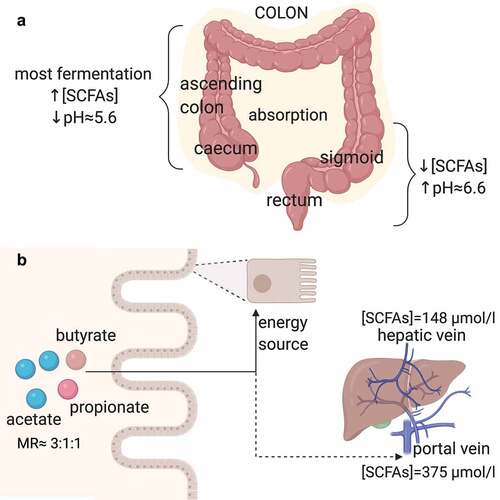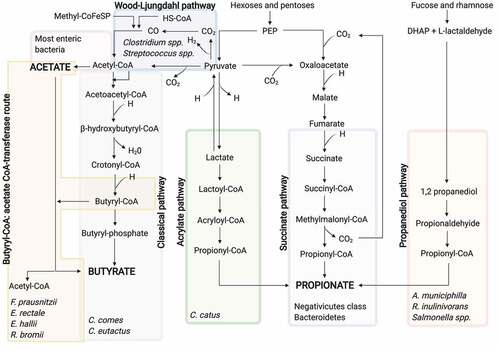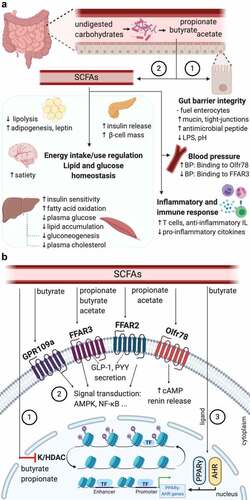Figures & data
Figure 1. Overview of the production and absorption sites, and transport of acetate, propionate and butyrate (SCFAs)

Figure 2. SCFA biosynthesis pathways from the dietary carbohydrate fermentation and the major SCFA-producing bacteria for each pathway

Figure 3. Beneficial roles of SCFA in cardio-metabolic health and the indirect mechanisms involved

Table 1. Summary of studies reporting beneficial effects of SCFAs in cardio-metabolic health through different traits
Table 2. Studies reporting the modulation by diets of SCFA-producing bacteria, SCFA levels, and risk factors associated with cardio-metabolic health
